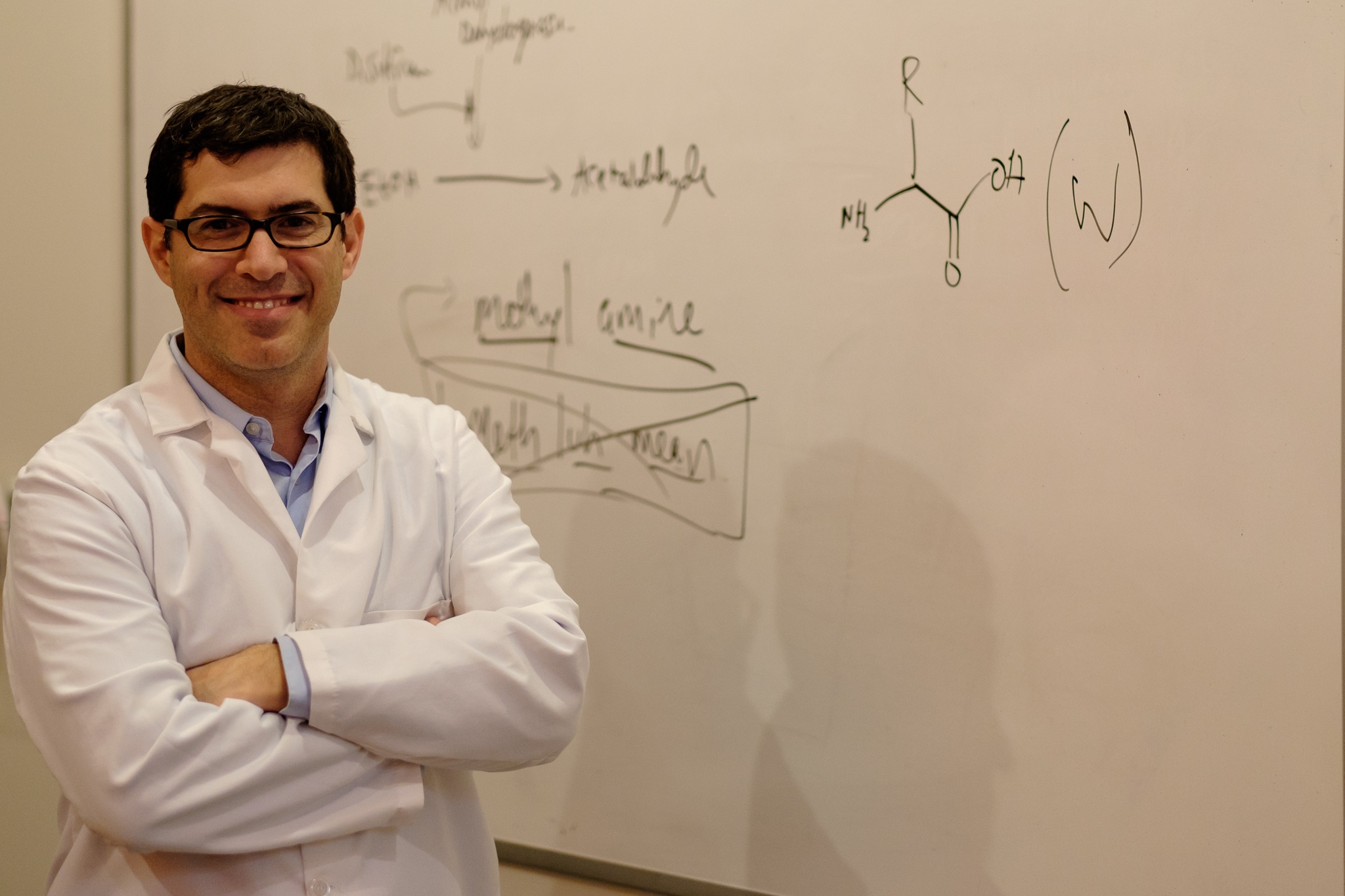Quartzy co-founder Adam Regelmann is an MD-PhD. He bypassed a career in gastroenterology to launch Quartzy with Columbia colleague Jayant Kulkarni. Each week Adam answers five questions about science, medicine, and pop-culture.
What are some surprisingly healthy or unhealthy foods?
 Adam Regelmann
Adam Regelmann
In general, in life, balance is the most important thing. Americans are bad at balance. It’s like, “There’s a study that coffee is good for you, so I’m going to drink 20 cups a day.” There are chemicals in dark chocolate and coffee that are good for cardiovascular health, but that’s if you have a reasonable amount—ideally the amount in the study, not 10 times the studied amount. There’s usually a J-curve for anything you put into your body, where if you put none of it in your body, that’s bad, if you put a little bit, that’s good, and if you put too much, it can be really, really bad. I remember one of my toxicology professors saying, “Everything is poison, all that matters is the dose.”
Red wine to reduce strokes, for example. At zero servings per day, your risk is a little higher. At one, your risk goes down. At two, your risk is about the same as zero. And at three, the risk goes higher. And you can pretty much repeat this for a lot of foods. Processed foods are the exception because many different processed foods contain the same preservatives, emulsifiers, coloring agents, etc. So if you eat a diversity of processed foods, you think you’re being balanced, but really you’re getting a high dose of one or two chemicals that are in all of them. So a well-balanced (meaning a lot of different unprocessed foods, especially plants) diet is probably the secret to everything.
Is it bad to crack your knuckles?
It depends how you define what is “bad.” There is some evidence that habitual knuckle crackers have reduced grip strength, which people think is due to increases in connective tissue (e.g. tendon) laxity. But most people, when they ask about it being bad, focus on arthritis. This has been studied pretty extensively, and the answer is no: It does not increase the risk of arthritis. There was a medical doctor, Donald Unger, who spent his whole life cracking the knuckles on one hand and not the other. He noticed in the end, there was no difference between the two hands.
As far as what that cracking sound is: There’s fluid in the synovial space between the bones in your hands. And if you bend it a certain way, you rapidly increase the volume of the space, which causes a vacuum to form, decreases the pressure on the liquid, and gas escapes. So what you hear is gas escaping the space.
There’s a movie trope where someone saves another person’s life by injecting medicine directly into their heart (i.e. Pulp Fiction) just as they’re about to die. Is this a real thing?
I believe in Pulp Fiction, John Travolta injects Uma Thurman with “adrenaline.” Adrenaline is the same thing as epinephrine, so an EpiPen is adrenaline. There is a protocol for intracardiac injection. I think it’s only used in the surgical setting where the chest is open and there’s access to the heart. The protocol is to inject the epinephrine directly into the left ventricle. The blood in the left ventricle is under very high pressure when the heart is beating, so if you put a needle into the left ventricle, and the heart starts again, blood can actually come out of the same hole. And if you get blood surrounding the heart, you can actually die from that, too (cardiac tamponade). That’s just one of the risks. Sticking a needle into the chest right there can also cause a lung to drop (pneumothorax), or cut part of the heart muscle itself. Also problematic is you’d need to stop chest compressions to inject the heart like that. So it’s technically a protocol that’s still on some books somewhere, but almost never used.
I’ve seen a lot of “codes” (when somebody’s heart stops) in the hospital, and I’ve never seen an intracardiac injection. In most cases, epinephrine and atropine are injected into either a peripheral IV or a central IV, and the chest compressions from CPR push blood back to the heart where those medications can act. So, in real life, it would be better for Uma if John Travolta performed chest compressions until the paramedics arrive to perform ACLS.
What’s happening when your stomach growls?
The technical term for any type of noise made in your intestines is borborygmi. Basically, that’s caused by the enteric nervous system. Enteric just means “of the gut.” It has as many neurons as your brain, and it controls how food moves through the giant tube that we are. There’s an enteric pacemaker that causes a systematic contraction of the muscles of the gut that push food forward in a process called peristalsis. And as it does that, there’s gas in the gut, so it makes noise. That’s the fluid and the gas just sloshing around.
The organs of the body talk to each other with hormones, so the stomach can sense that it’s been awhile since you’ve eaten. Two to four hours after a meal, these large peristaltic waves start in your stomach that push any food remnants forward. They’re larger contractions and they’re more rhythmic and organized, so the sound is louder and more rhythmic.
What’s a lesser-known Quartzy feature you and/or users especially love?
I like the interactive freezer box maps. That was a big thing in my lab. By the end of my PhD, I probably had 50 freezer boxes in the minus-80, and I was managing the maps on Excel spreadsheets.
Quartzy is the world’s No. 1 lab management platform. We help scientists easily organize orders, manage inventory, and save money. We’re free and always will be. Visit Quartzy.com or reach out at info@quartzy.com.
Interested in writing for The Q? Send us an email!
Share this:

Greg Schindler
Greg has a BA from Stanford (English/Football) and MS from Oregon (Journalism). He's our Director of Marketing and Pastries.
